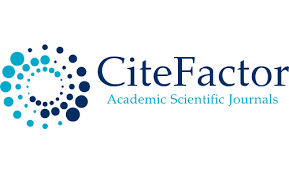"Methods of introducing English language"
Keywords:
method, lingvo poetics, psychology, educationAbstract
Foreign Language Teaching Methodology has more than 200 years of history as a science. During this period, it is possible to observe that different attitudes are expressed to the methods of teaching a foreign language. One such view is academic L.V.It is considered to belong to Shcherba. In his opinion, despite the fact that the methodology of teaching any subject is a science, theoretical science is not considered. He will solve practical issues. In particular, the methodology of teaching a foreign language does not only rely on evidence of psychology, but also on general and private linguistic research. This article describes the methods of teaching English.
References
English: Jalalov Jamal. Foreign Language Teaching Methodology. Publishing and printing house "teacher", Tashkent – 2012.
She Is A Gentleman. B. A synopsis on the topic “the use of innovative technologies in teaching English”. Tashkent-2012 year
Otaboeva, M. The R. The use of modern innovative technologies in the teaching of a foreign language and its effectiveness / m. The R. Otaboeva. - Tekst:neposredstvenniy, elektronniy / / Molodoy ucheniy. — 2017. — № 4.2 (138.2). - Fuck you. 36–37. - URL:
Applied interactive methods” (methodological guide), Navoi, 2006, 40 page.
Xaldurova M., Fayziyeva N. Rixsittilayeva, F. "IN TEACHING A FOREIGN LANGUAGE
USE OF AUXILIARY TOOLS”. Tashkent: TDPU named after Nizami, 2005
Hashimov A’., Yakubov I. "Methods of teaching English" (tutorial) Tashkent: publishing house” Sharq", 2003
Downloads
Published
Issue
Section
License

This work is licensed under a Creative Commons Attribution-NonCommercial 4.0 International License.
User Rights
Under the Creative Commons Attribution-NonCommercial 4.0 International (CC-BY-NC), the author (s) and users are free to share (copy, distribute and transmit the contribution).
Rights of Authors
Authors retain the following rights:
1. Copyright and other proprietary rights relating to the article, such as patent rights,
2. the right to use the substance of the article in future works, including lectures and books,
3. the right to reproduce the article for own purposes, provided the copies are not offered for sale,
4. the right to self-archive the article.












